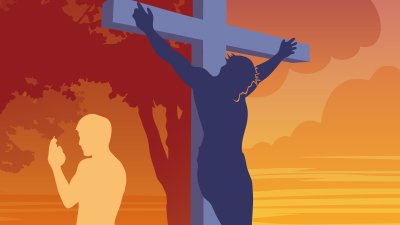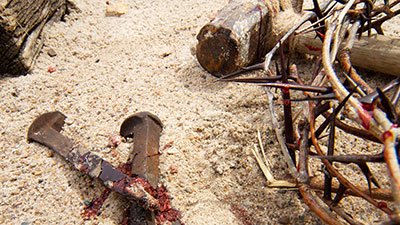
According to the Bible, It’s not Shrouded in Mystery at All!
One of the sidebar stories to the Winter Olympics in Torino, Italy, is the famous relic, the Shroud of Turin, which is stored in a cathedral in this northern Italian city.
John 20:5–7:
5He bent over and looked in at the strips of linen lying there but did not go in. 6Then Simon Peter, who was behind him, arrived and went into the tomb. He saw the strips of linen lying there, 7as well as the burial cloth that had been around Jesus’ head. The cloth was folded up by itself, separate from the linen.
One of the sidebar stories to the Winter Olympics in Torino (also known as Turin 1), Italy, is the famous relic, the Shroud of Turin, which is stored in a cathedral in this northern Italian city. The 14-foot-long linen cloth is claimed to be the shroud that was used to wrap the body of Jesus Christ after His death on the Cross. It contains the image of a thin, bearded man.
While scholars go back and forth about the reliability of carbon-dating testing that might offer a date for the shroud and determine its authenticity, the most serious argument against the cloth’s genuineness comes from the most reliable of sources: the Bible. 2
It is clear in the New Testament (viz., the book of John) that multiple pieces of cloth were used in burying Christ, not just one large sheet like the Shroud of Turin (John 19:40). In addition to that verse, the Scripture states in the very next chapter that Jesus was bound with linen strips (plural), not wrapped or cloaked with a single cloth (John 20:6). Lest there be any doubt about singular vs. plural cloths, John 20:7 declares that there was a piece of cloth wrapped around Christ’s head; the Shroud, however, is a 14-foot-long sheet that covered an entire body.
Many well-intentioned Christians like to look for “facts” that can prove that the Bible is true. Instead, their first instinct should be to interpret evidence against what God’s Word says. 3 As AiG–USA president Ken Ham recalled (see Kangaroos, Dinosaurs and Eden), there was a time when, after speaking at a teachers convention and declaring that facts and evidence do not necessarily speak for themselves, he was approached by a teacher who observed, “We want to find Noah’s Ark and the Ark of the Covenant, and hope the Shroud of Turin really is the shroud Jesus was wrapped in, because we are looking for ‘proofs’ that the Bible is true. However, what you have taught us is that ultimately we can’t ‘prove’ anything in relation to the past anyway, and once we accept what the Bible claims for itself, that it is the Word of God and thus build all of our thinking upon this, then we can consistently interpret the evidences around us and logically defend God’s Word. Wow—what a relief!”
Thus there really is no need for endless conferences on the Shroud that present scholarly papers year after year in an effort to defend the Shroud’s authenticity (and attempt to explain, among other things, how the blood on the cloth remains red when old, dry blood turns black). If these theological scholars and students of the Shroud were to simply read the authoritative Word of God, they would come to the realization that the Shroud is not authentic.
Footnotes
- Turin is the English spelling of this Italian city. But in discussions between the NBC-TV network televising the Games and the Olympic Organizing Committee, the Italian spelling of Torino was chosen as the brand name for the Olympics.
- As well as from Jewish burial customs.
- Another caution is that presuppositions and biases (i.e., a person’s starting beliefs) can be misapplied, causing further error. For example, if you believe the earth is billions of years old based on your (incorrect) interpretation of evidence, then it is necessary to (incorrectly) re-interpret the Bible’s six literal days of creation and make each creation day millions and millions of years in duration.
Recommended Resources

Answers in Genesis is an apologetics ministry, dedicated to helping Christians defend their faith and proclaim the good news of Jesus Christ.
- Customer Service 800.778.3390
- © 2024 Answers in Genesis






